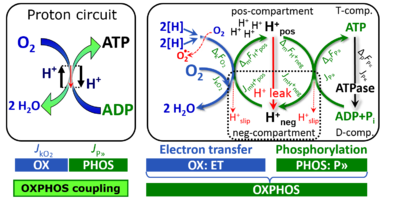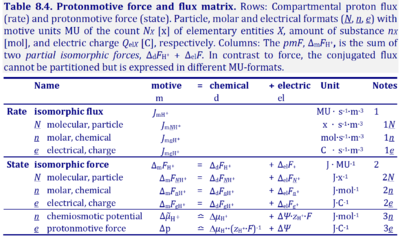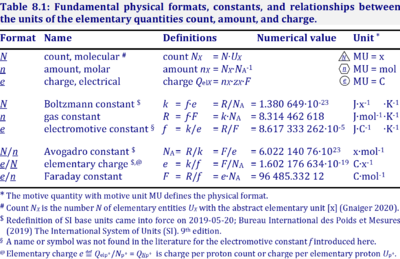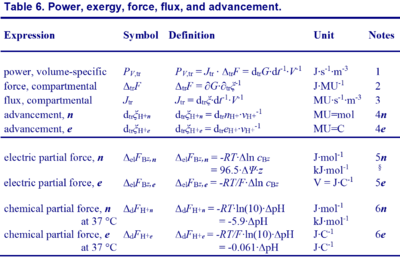MitoEAGLE preprint 2017-09-21: Difference between revisions
No edit summary |
No edit summary |
||
| (12 intermediate revisions by 2 users not shown) | |||
| Line 1: | Line 1: | ||
{{MITOEAGLE}} | {{MITOEAGLE}} | ||
{{Publication | {{Publication | ||
|title=MitoEAGLE preprint 2018-02-18(21) The protonmotive force and respiratory control | |title=MitoEAGLE preprint 2018-02-18(21) The protonmotive force and respiratory control. | ||
|info=<big></big> [[File:PDF.jpg|120px|link=http://www.mitoeagle.org/images/5/5b/MitoEAGLE_preprint_2017-09-21.pdf |Bioblast pdf]] - » [http://www.mitoeagle.org/index.php/File:MitoEAGLE_preprint_2017-09-21.pdf Versions] | |info=<big></big> [[File:PDF.jpg|120px|link=http://www.mitoeagle.org/images/5/5b/MitoEAGLE_preprint_2017-09-21.pdf |Bioblast pdf]] - » [http://www.mitoeagle.org/index.php/File:MitoEAGLE_preprint_2017-09-21.pdf Versions] | ||
:::: '''Published''': » Gnaiger Erich et al ― MitoEAGLE Task Group (2020) Mitochondrial physiology. Bioenerg Commun 2020.1. doi:10.26124/bec:2020-0001.v1. - [[BEC_2020.1_doi10.26124bec2020-0001.v1 |»Bioblast link«]] | |||
|authors=MitoEAGLE | |authors=MitoEAGLE | ||
|year=2018 | |year=2018 | ||
|journal=MitoEAGLE | |journal=MitoEAGLE | ||
|abstract='''Note''': Subscript ‘§’ indicates throughout the text those parts, where ''potential differences'' provide a mathematically correct but physicochemically incomplete description and should be replaced by ''stoichiometric potential differences'' ([[Gnaiger 1993 Pure Appl Chem |Gnaiger 1993b]]). A unified concept on vectorial motive transformations and scalar chemical reactions will be derived elsewhere (Gnaiger, in prep.). Appreciation of the fundamental distinction between ''differences of potential'' versus ''differences of stoichiometric potential'' may be considered a key to critically evaluate the arguments presented in Section 3 on the protonmotive force. Since this discussion appears to be presently beyond the scope of a MitoEAGLE position statement, Section 3 | |abstract='''Note''': Subscript ‘§’ indicates throughout the text those parts, where ''potential differences'' provide a mathematically correct but physicochemically incomplete description and should be replaced by ''stoichiometric potential differences'' ([[Gnaiger 1993 Pure Appl Chem |Gnaiger 1993b]]). A unified concept on vectorial motive transformations and scalar chemical reactions will be derived elsewhere (Gnaiger, in prep.). Appreciation of the fundamental distinction between ''differences of potential'' versus ''differences of stoichiometric potential'' may be considered a key to critically evaluate the arguments presented in Section 3 on the protonmotive force. Since this discussion appears to be presently beyond the scope of a MitoEAGLE position statement, Section 3 is removed from the next version and [[Gnaiger 2019 MitoFit Preprint Arch |'''final manuscript''']]. This section should become a topic of discussion within [[WG1 MitoEAGLE protocols, terminology, documentation |Working Group 1]] of the MitoEAGLE consortium, following a primary peer-reviewed publication of the concept of stoichiometric potential differences. | ||
|keywords=Mitochondrial respiratory control, coupling control, mitochondrial preparations, protonmotive force, chemiosmotic theory, oxidative phosphorylation, OXPHOS, efficiency, electron transfer, ET; proton leak, LEAK, residual oxygen consumption, ROX, State 2, State 3, State 4, normalization, flow, flux | |keywords=Mitochondrial respiratory control, coupling control, mitochondrial preparations, protonmotive force, chemiosmotic theory, oxidative phosphorylation, OXPHOS, efficiency, electron transfer, ET; proton leak, LEAK, residual oxygen consumption, ROX, State 2, State 3, State 4, normalization, flow, flux | ||
}} | }} | ||
{{MitoEAGLE preprint 1 Phases}} | {{MitoEAGLE preprint 1 Phases}} | ||
[[File:Coupling in OXPHOS.png|right|400px|thumb|Fig. 2. The proton circuit and coupling in oxidative phosphorylation (OXPHOS). Modified after [[Gnaiger_2014_MitoPathways#Chapter_1._Real-time_OXPHOS_analysis |Gnaiger 2014 MitoPathways]].]] | [[File:Coupling in OXPHOS.png|right|400px|thumb|Fig. 2. The proton circuit and coupling in oxidative phosphorylation (OXPHOS). Modified after [[Gnaiger_2014_MitoPathways#Chapter_1._Real-time_OXPHOS_analysis |Gnaiger 2014 MitoPathways]].]] | ||
| Line 31: | Line 30: | ||
[[File:Table Power, exergy, force, flux, advancement.png|400px]] | [[File:Table Power, exergy, force, flux, advancement.png|400px]] | ||
{{Keywords: Force and membrane potential}} | |||
{{Keywords: pH}} | |||
{{Labeling | {{Labeling | ||
| | |additional= MitoEAGLEPublication | ||
}} | }} | ||
Latest revision as of 11:48, 23 May 2020
| News and Events | Working Groups | Short-Term Scientific Missions | Management Committee | Members |
COST Action CA15203 (2016-2021): MitoEAGLE
Evolution-Age-Gender-Lifestyle-Environment: mitochondrial fitness mapping
MitoEAGLE preprint 2017-09-21
| MitoEAGLE preprint 2018-02-18(21) The protonmotive force and respiratory control. |
»  - » Versions
- » Versions
- Published: » Gnaiger Erich et al ― MitoEAGLE Task Group (2020) Mitochondrial physiology. Bioenerg Commun 2020.1. doi:10.26124/bec:2020-0001.v1. - »Bioblast link«
Abstract: Note: Subscript ‘§’ indicates throughout the text those parts, where potential differences provide a mathematically correct but physicochemically incomplete description and should be replaced by stoichiometric potential differences (Gnaiger 1993b). A unified concept on vectorial motive transformations and scalar chemical reactions will be derived elsewhere (Gnaiger, in prep.). Appreciation of the fundamental distinction between differences of potential versus differences of stoichiometric potential may be considered a key to critically evaluate the arguments presented in Section 3 on the protonmotive force. Since this discussion appears to be presently beyond the scope of a MitoEAGLE position statement, Section 3 is removed from the next version and final manuscript. This section should become a topic of discussion within Working Group 1 of the MitoEAGLE consortium, following a primary peer-reviewed publication of the concept of stoichiometric potential differences. • Keywords: Mitochondrial respiratory control, coupling control, mitochondrial preparations, protonmotive force, chemiosmotic theory, oxidative phosphorylation, OXPHOS, efficiency, electron transfer, ET; proton leak, LEAK, residual oxygen consumption, ROX, State 2, State 3, State 4, normalization, flow, flux
- » Manuscript phases and versions
Manuscript phases and versions - an open-access apporach
- This manuscript on ‘Mitochondrial respiratory states and rates’ is a position statement in the frame of COST Action CA15203 MitoEAGLE. The list of coauthors evolved beyond phase 1 in the bottom-up spirit of COST.
- The global MitoEAGLE network made it possible to collaborate with a large number of coauthors to reach consensus on the present manuscript. Nevertheless, we do not consider scientific progress to be supported by ‘declaration’ statements (other than on ethical or political issues). Our manuscript aims at providing arguments for further debate rather than pushing opinions. We hope to initiate a much broader process of discussion and want to raise the awareness on the importance of a consistent terminology for reporting of scientific data in the field of bioenergetics, mitochondrial physiology and pathology. Quality of research requires quality of communication. Some established researchers in the field may not want to re-consider the use of jargon which has become established despite deficiencies of accuracy and meaning. In the long run, superior standards will become accepted. We hope to contribute to this evolutionary process, with an emphasis on harmonization rather than standardization.
- Phase 1: The protonmotive force and respiratory control
- » The protonmotive force and respiratory control - Discussion
- 2016-11 MitoEAGLE Verona 2016
- 2017-03 MitoEAGLE Barcelona 2017
- 2017-04-09 to 2017-09-18 (44 versions)
- 2017-07 MiPschool Obergurgl 2017
- 2017-09-21 to 2018-02-06 (21 versions)
- » MitoEAGLE preprint 2017-09-21 - Discussion
- 2017-11-11: Print version (16) for MiP2017/MitoEAGLE Hradec Kralove CZ
- Phase 2: Mitochondrial respiratory states and rates: Building blocks of mitochondrial physiology Part 1
- » MitoEAGLE Task Group States and rates - Discussion
- 2018-02-08 (42 versions up to present)
- 2018-08 EBEC2018 Budapest HU - Poster
- 2018-09 MiP2018/MitoEAGLE Jurmala LV
- 2018-10 MiPschool Tromso-Bergen 2018
- Phase 3: 2019-02-12: Publication as a preprint: MitoFit Preprints with DOI number, providing widely accepted visible proof that the publication is citable. - See MitoFit DOI Data Center (2018-12-12 submission).
- Phase 4: Journal submission
- Target: CELL METABOLISM, aiming at indexing by The Web of Science and PubMed.
- Coauthors
- 2017-09-21 Version 01: 105 coauthors
- 2017-10-15 Version 10: 131 coauthors
- 2018-01-18 Version 20: 168 coauthors
- 2018-02-26 Version 30: 225 coauthors
- 2018-08-20 Version 40: 350 coauthors - EBEC Poster
- 2018-10-17 Version 44: 426 coauthors - MiPschool Tromso-Bergen 2018
- 2018-12-12 Version 50: 517 coauthors - Submission to the preprint server bioRxiv not successful
- 2019-02-12 Preprint version 1: 530 coauthors
- 2019-03-15 Preprint version 2: 533 coauthors
- 2019-04-24 Preprint version 3: 533 coauthors
- 2019-05-20 Preprint version 4: 542 coauthors
- 2019-07-24 Preprint version 5: 612 coauthors
- 2019-08-30 Preprint version 6: 622 coauthors - Preprint publication doi:10.26124/mitofit:190001.v6
- Coauthors
- BEC 2020.1. - Gnaiger Erich et al ― MitoEAGLE Task Group (2020) Mitochondrial physiology. Bioenerg Commun 2020.1. doi:10.26124/bec:2020-0001.v1. - »Bioblast link«

Section 2: Oxidative phosphorylation and coupling states in mitochondrial preparations
Section 3: The protonmotive force and proton flux
- Bioblast links: Force and membrane potential - >>>>>>> - Click on [Expand] or [Collapse] - >>>>>>>
- Fundamental relationships
- mt-Membrane potential and protonmotive force
- Oroboros Potentiometry
- » ISE TPP-Module
- » Oroboros Manual: MiPNet15.03 O2k-MultiSensor-ISE
- » TPP - Oroboros Procedures: Tetraphenylphosphonium
- » Specifications: MiPNet15.08 TPP electrode
- » Poster
- » Unspecific binding of TPP+
- » TPP+ inhibitory effect
- Oroboros Potentiometry
- Oroboros FluoRespirometry
- » Oroboros Catalogue: Oroboros FluoRespirometer
- » Oroboros Manual: MiPNet22.11 O2k-FluoRespirometer manual
- » Safranin - Oroboros Procedures: MiPNet20.13 Safranin mt-membranepotential / Safranin
- » TMRM - Oroboros Procedures: TMRM
- Oroboros FluoRespirometry
- Oroboros Publications
- Bioblast links: pH and protons - >>>>>>> - Click on [Expand] or [Collapse] - >>>>>>>
- pH and protons
- » pH
- » hydrogen ion H+
- » hydron H+
- » hydronium ion H3O+
- » hydride H-
- » proton p+
- » pH buffering capacity
- » proton flux
- » proton pump versus hydrogen ion pump
- » proton leak
- » proton slip
- » protonmotive force
- pH and protons
- Oroboros pH
- » pH ISE-Module
- » MiPNet08.16 pH calibration
- » pH calibration buffers
- » File:PH-Calibration-List.xls
- » ratiometric: Carboxy SNARF 1
- » ratiometric: HPTS
- Oroboros pH
- Oroboros Publications
- HRR - general
- » Oroboros
- » Oroboros NextGen-O2k
- » Oroboros O2k
- » Oroboros Series
- » O2k signals and output
- » Titration-Injection microPump
- » Oroboros Manual: MiPNet22.11 O2k-FluoRespirometer manual
- » O2k configuration
- » O2k control
- » Compare: TPP ISE-Module
- HRR - general
- DatLab
- » DatLab
- DatLab
Labels:
MitoEAGLEPublication








